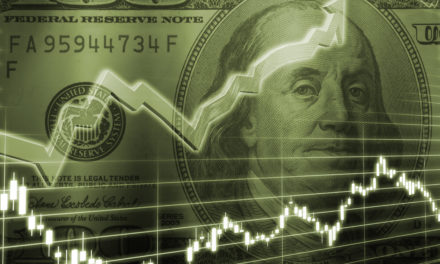
“I buy on the assumption that they could close the market the next day and not reopen it for five years.”
— Warren Buffett
One of the most important things investors can learn from Warren Buffett, is about how they approach their time horizon for an investment into a stock under consideration. Because immediately after buying shares of a given stock, investors will then be able to check on the day-to-day (and even minute-by-minute) market value. Some days the stock market will be up, other days down. These daily fluctuations can often distract from the long-term view. Today, we look at the result of a five year holding period for an investor who was considering Raymond James Financial Inc (NYSE: RJF) back in 2016, bought the stock, ignored the market’s ups and downs, and simply held through to today.
| Start date: | 08/29/2016 |
|
|||
| End date: | 08/26/2021 | ||||
| Start price/share: | $57.35 | ||||
| End price/share: | $139.59 | ||||
| Starting shares: | 174.37 | ||||
| Ending shares: | 187.90 | ||||
| Dividends reinvested/share: | $6.19 | ||||
| Total return: | 162.29% | ||||
| Average annual return: | 21.30% | ||||
| Starting investment: | $10,000.00 | ||||
| Ending investment: | $26,232.79 | ||||
As we can see, the five year investment result worked out exceptionally well, with an annualized rate of return of 21.30%. This would have turned a $10K investment made 5 years ago into $26,232.79 today (as of 08/26/2021). On a total return basis, that’s a result of 162.29% (something to think about: how might RJF shares perform over the next 5 years?). [These numbers were computed with the Dividend Channel DRIP Returns Calculator.]
Notice that Raymond James Financial Inc paid investors a total of $6.19/share in dividends over the 5 holding period, marking a second component of the total return beyond share price change alone. Much like watering a tree, reinvesting dividends can help an investment to grow over time — for the above calculations we assume dividend reinvestment (and for this exercise the closing price on ex-date is used for the reinvestment of a given dividend).
Based upon the most recent annualized dividend rate of 1.56/share, we calculate that RJF has a current yield of approximately 1.12%. Another interesting datapoint we can examine is ‘yield on cost’ — in other words, we can express the current annualized dividend of 1.56 against the original $57.35/share purchase price. This works out to a yield on cost of 1.95%.
More investment wisdom to ponder:
“There’s a virtuous cycle when people have to defend challenges to their ideas. Any gaps in thinking or analysis become clear pretty quickly when smart people ask good, logical questions.” — Joel Greenblatt




